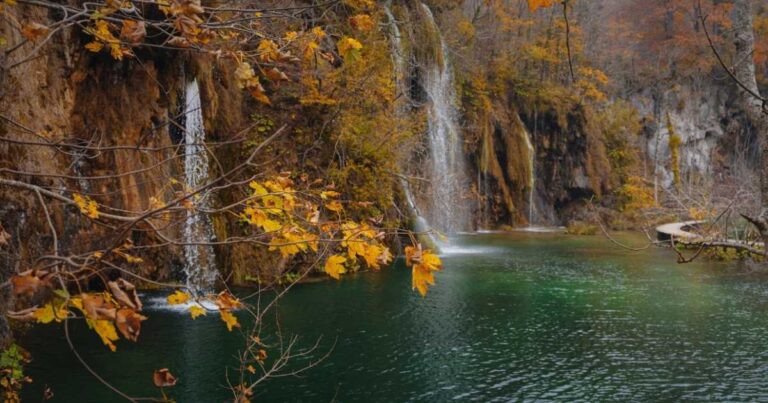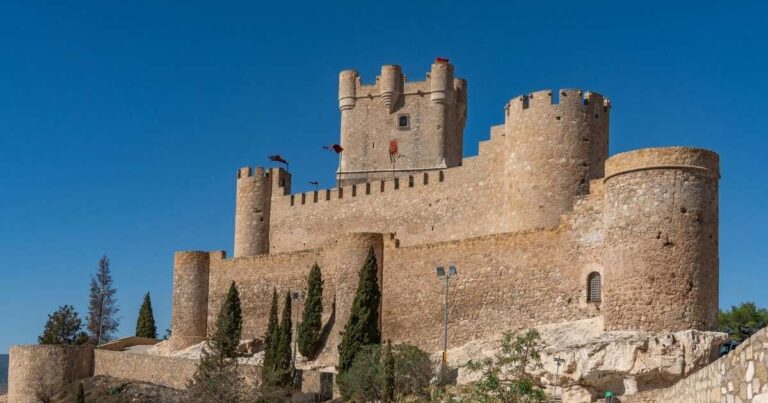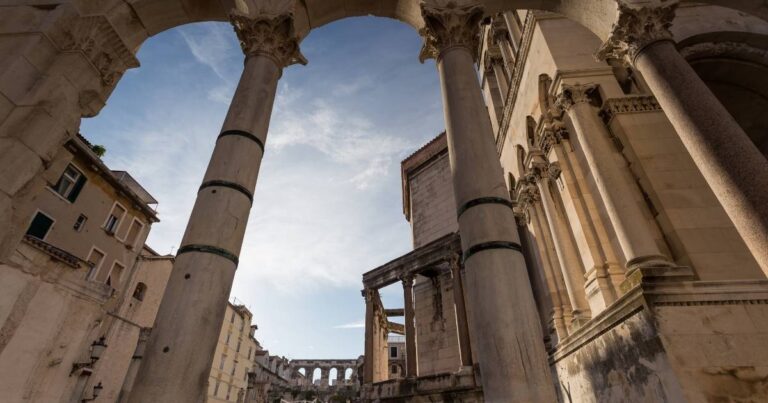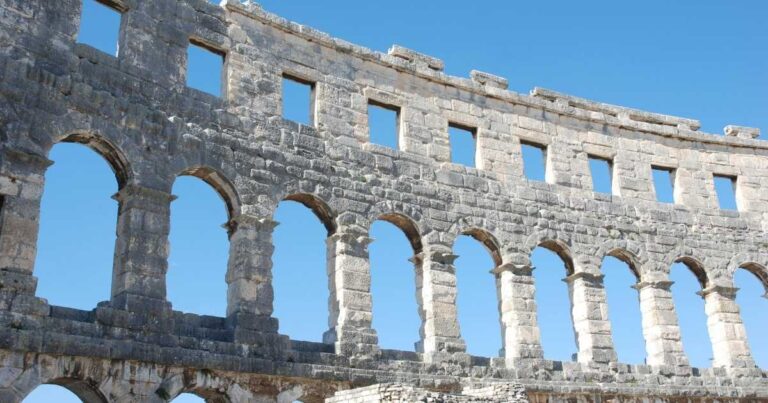Embark on an unforgettable journey through time as we explore Croatia’s majestic castles and fortresses. This article serves as your comprehensive guide to discovering the most stunning strongholds, each whispering tales of turbulent history and boasting remarkable medieval architecture. Prepare to be captivated by the beauty and intrigue of Croatia’s medieval past, as we delve into the captivating stories behind these magnificent structures.
Introduction to Croatia’s Castles and Fortresses
The Allure of Croatia’s Medieval Heritage
Croatia’s medieval heritage is a tapestry woven with threads of bravery, artistry, and strategic brilliance. The allure of Croatia’s medieval past lies not only in the imposing stone walls of its fortresses and castles but also in the rich history they represent. These defensive structures, testaments to a bygone era, beckon travelers to explore the fascinating narratives embedded within their ancient stones. [Insert Internal Link]
Why Visit Castles in Croatia?
Why should you visit castles in Croatia? The answer is simple: to immerse yourself in a world of breathtaking beauty and historical significance. Croatia’s medieval fortresses and castles offer a unique opportunity to step back in time and experience the grandeur of a bygone era. From the strategic location of coastal fortresses overlooking the Adriatic Sea to the majestic castles nestled in the rolling hills of Zagorje, each destination promises an unforgettable adventure.
Overview of the Article
This article will serve as your guide to navigating the captivating world of Croatia’s medieval fortresses and castles. We’ll journey through some of the most remarkable examples of medieval architecture, including Trakošćan Castle, Veliki Tabor, and the formidable fortress in Dubrovnik. We’ll delve into their history, explore their cultural heritage, and uncover the stories that make these fortresses and castles in Croatia truly special. Whether you’re a history enthusiast or simply seeking breathtaking sights, prepare to be enchanted by the wonders that await.
Top Castles to Visit in Croatia
Trakošćan Castle: A Fairytale Experience
Trakošćan Castle, one of the best-preserved castles in Croatia, stands as a testament to romanticism and noble life. Nestled in the Hrvatsko Zagorje region, the Croatian castle embodies a fairytale experience with its picturesque lake and surrounding forests. Exploring Trakošćan Castle offers a glimpse into the lives of Croatian nobility, showcasing opulent interiors and stunning vistas that transport you to another time.
Veliki Tabor: History and Legends
Veliki Tabor, steeped in history and legends, stands as a proud monument to Croatia’s turbulent history. This imposing stronghold, located in Hrvatsko Zagorje, offers visitors a glimpse into the defensive strategies employed during times of war. The thick defensive walls and strategic location of Veliki Tabor tell tales of battles fought and lives defended. It is an essential stop for anyone interested in military history.
Dubrovnik: The Fortress City
Dubrovnik, often hailed as the “Pearl of the Adriatic,” is a fortress city renowned for its breathtaking beauty and remarkable medieval fortifications. Its imposing defensive walls, a UNESCO World Heritage site, encircles the old town, offering panoramic views of the Adriatic Sea. Walking along the walls of Dubrovnik is like stepping back in time, allowing you to experience the grandeur and strategic importance of this historical landmark which featured in Game of Thrones.
Discovering Fortresses in Croatia
Exploring the Fortress in Novigrad
Discovering the fortress in Novigrad, specifically Novigrad na Dobri, is a journey into Croatia’s medieval past, where the echoes of turbulent history resonate through the ancient stones. Novigrad Castle, though perhaps lesser known than Dubrovnik or Trakošćan Castle, offers a unique glimpse into the strategic locations chosen for defensive structures during the medieval era. Exploring this Croatian castle reveals the architectural ingenuity required to defend against potential invaders, showcasing the cultural heritage of this region of Croatia.
Dubovac Fortress: A Hidden Gem
Dubovac Castle, situated near Karlovac, stands as a hidden gem among Croatia’s fortresses and castles. Overlooking the city, this fortress in Croatia showcases the medieval architecture prevalent in the region, reflecting a turbulent history marked by battles and sieges. Dubovac Castle, or Dubovac Fortress, is not just a defensive structure but a testament to the enduring spirit of the Croatian people, a place where history and culture converge.
Fortresses in the Zagorje Region
The Zagorje region, with its rolling hills and picturesque landscapes, is home to some of the most enchanting fortresses in Croatia. These Croatian castles, including Veliki Tabor and Trakošćan, offer a glimpse into the opulent lives of the nobility and the strategic importance of the region. Exploring these castles to visit in Croatia reveals a unique blend of medieval architecture, rich history, and cultural heritage, making Zagorje a must-visit destination for castle enthusiasts.
Historical Significance of Croatian Castles and Fortresses
Medieval Fortresses: A Glimpse into the Past
Medieval fortresses in Croatia serve as invaluable windows into the past, offering tangible connections to a turbulent history shaped by battles, alliances, and cultural exchanges. These defensive structures, testaments to the strategic acumen of medieval architects, stand as silent witnesses to the ebb and flow of power. Exploring these fortresses allows us to appreciate the challenges faced by those who lived within their walls, providing a deeper understanding of Croatia’s medieval heritage.
Architectural Styles of Croatian Castles
The architectural styles of Croatian castles are diverse, reflecting influences from various cultures and periods. From the Romanesque foundations of some coastal fortresses to the Gothic and Renaissance embellishments of inland castles, each structure tells a story of adaptation and innovation. Exploring the architectural nuances of these castles and fortresses in Croatia provides insight into the cultural heritage and artistic sensibilities that shaped the Croatian landscape.
Cultural Impact of Castles on Croatian Identity
The cultural impact of castles on Croatian identity is profound, shaping collective memory and fostering a sense of national pride. These fortresses and castles in Croatia stand as symbols of resilience, reminding us of the battles fought and the sacrifices made to defend Croatian lands. They serve as focal points for cultural events, festivals, and historical reenactments, ensuring that the stories of the past continue to resonate with future generations. The history and culture of Croatia are inextricably linked to these magnificent structures, preserving the nation’s cultural heritage.
Practical Tips for Your Castle Adventures
Best Time to Visit Castles in Croatia
The best time to visit castles in Croatia is during spring (April-May) and autumn (September-October) for pleasant temperatures and fewer tourists. These shoulder seasons provide a comfortable environment to delve into the rich history and explore fortresses and castles in Croatia, appreciating the cultural heritage without battling throngs of people.
How to Plan Your Castle-Hopping Trip
Planning a castle-hopping trip in Croatia involves considering factors like transportation, accommodation, and the geographical spread of the castles. Start by identifying the castles to visit in Croatia that interest you most, such as Veliki Tabor or the fortresses in the Zagorje region. Renting a car offers flexibility, especially for reaching more remote sites, allowing you to explore these Croatian castles and fortresses at your own pace. Remember to book accommodations in advance, particularly if traveling during peak season. [Insert Internal Link]
What to Expect When Visiting
When visiting fortresses and castles in Croatia, expect a mix of indoor and outdoor exploration, often involving walking on uneven terrain and climbing stairs. Many sites, including Dubrovnik and some medieval fortified locations, have steep inclines and steps. Be sure to wear comfortable shoes and bring water, especially during warmer months. Check the opening hours and tour availability beforehand to maximize your experience, and be prepared to be transported back in time as you explore these strongholds.
Current Trends in Tourism of Croatian Castles
Growing Popularity of Castle Tours
The growing popularity of castle tours in Croatia reflects a broader trend in tourism towards immersive cultural experiences. Travelers are increasingly seeking authentic encounters with history and heritage, driving demand for guided tours of castles and fortresses in Croatia. This surge in interest prompts the local authorities to invest more in the visitor experience, thereby enriching the rich history and cultural heritage of these strategic locations.
Future of Castle Preservation and Tourism
The future of castle preservation and tourism in Croatia hinges on sustainable practices that balance visitor access with the need to protect these historical sites. Innovative approaches, such as virtual reality experiences and interactive exhibits, can enhance visitor engagement while minimizing physical impact on the structures. Collaboration between tourism boards, conservation organizations, and local communities is essential to ensuring the long-term viability of Croatia’s medieval fortresses and castles, maintaining the cultural heritage for future generations.
Engaging with Local Culture and History
Engaging with local culture and history is an integral part of experiencing Croatia’s fortresses and castles. Many destinations offer opportunities to participate in traditional festivals, historical reenactments, and culinary experiences that showcase the region’s unique heritage. Interacting with local guides and artisans can provide deeper insights into the history and culture of the area, enhancing your understanding of these majestic sites. Make sure to discover not only the defensive structure itself but also the surrounding communities.
Conclusion
Recap of Key Insights
Our journey through Croatia’s castles and fortresses has unveiled a tapestry of rich history and architectural marvels. From the fairytale charm of Trakošćan Castle to the imposing defensive walls of Dubrovnik, each fortress in Croatia tells a unique story. We’ve explored the strategic location of coastal fortresses, the elegance of inland castles, and the cultural heritage embedded within these ancient stones. Exploring these medieval fortresses offers a profound connection to Croatia’s past.
Final Advice for Travelers
For travelers planning to explore Croatia’s castles and fortresses, remember to embrace the journey with an open mind and comfortable shoes. Immerse yourself in the local culture and history, engage with knowledgeable guides, and allow ample time to soak in the atmosphere of these strongholds. Don’t just see the castles to visit in Croatia; experience them. Let the stories of turbulent history unfold as you wander through the castles and fortresses.
FAQs
What are the must-visit castles in Croatia?
Trakošćan Castle, Veliki Tabor, and Dubrovnik are must-visit castles in Croatia. Croatia boasts numerous must-visit castles, each offering a unique glimpse into the nation’s rich history and cultural heritage. These fortresses and castles in Croatia showcase a blend of history and beauty.
| Castle | Highlights |
|---|---|
| Trakošćan Castle | Picturesque setting, opulent interiors, one of the best-preserved castles |
| Veliki Tabor | Testament to Croatia’s turbulent history |
| Dubrovnik | Remarkable medieval fortification |
Dubovac Castle near Karlovac is a hidden gem.
How can I reach the castles in Croatia?
Reaching the castles in Croatia is typically best achieved by car, especially for those located in the countryside like Veliki Tabor or in the Zagorje region. Public transportation can be used to reach larger cities like Zagreb or Karlovac, from which you can then take local buses or taxis to reach the fortresses and castles. Some coastal fortresses, such as those near the Adriatic Sea, may also be accessible by boat.
Are there guided tours available for castle visits?
Guided tours are available for most major castles in Croatia. Yes, guided tours are readily available for most of the major castles to visit in Croatia, offering invaluable insights into the rich history and cultural heritage of each site. These tours often delve into the architectural styles, strategic locations, and the historical significance of the fortresses, enhancing your understanding and appreciation. Check with the local tourism boards or the castles’ official websites for tour schedules and booking information, so you don’t miss a single detail on your trip to the medieval fortress.
What is the best time of year to visit Croatian castles?
Spring (April-May) and autumn (September-October) are the best times to visit Croatian castles. The best time of year to visit Croatian castles is during the shoulder seasons – spring (April-May) and autumn (September-October). The weather is generally pleasant, with fewer crowds compared to the peak summer months. This allows for a more relaxed and immersive experience exploring the medieval town and fortifications, like the defensive walls of Dubrovnik or Trakošćan Castle. You can fully appreciate these magnificent structures without battling through throngs of tourists.
Can I explore the castles on my own?
Yes, you can explore most castles and fortresses in Croatia on your own, allowing you the freedom to wander at your own pace and delve into the aspects that interest you most. While guided tours offer structured insights, self-guided exploration provides a more personal experience, allowing you to discover hidden corners and soak in the atmosphere of these historical sites. Remember to check for any specific rules or restrictions before your visit to the medieval fortress.







